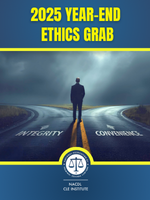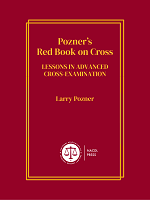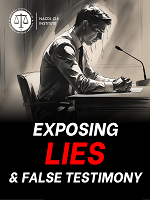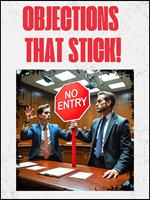Access to The Champion archive is one of many exclusive member benefits. It’s normally restricted to just NACDL members. However, this content, and others like it, is available to everyone in order to educate the public on why criminal justice reform is a necessity.
On April 11, 2018, Attorney General Jeff Sessions spoke in Las Cruces, New Mexico, to a group of sheriffs from southern border towns.1 In his speech, Attorney General Sessions began with the usual litany of fear-mongering that runs hand-in-hand when discussing immigration — referencing guns, drugs, and gangs in the same breadth as those who commit the most egregious crime of all … gasp … illegal entry to the United States of America. This was not a “new” method of attack on undocumented immigration, but what came next was something new: “I ordered a change to Department criminal prosecution policies for those who enter our country illegally. I have ordered each United States Attorney’s Office along the southwest border to have a zero-tolerance policy toward illegal entry. Our goal is to prosecute every case that is brought to us. There must be consequences for illegal actions. …”2 With that statement and the policy directive that was sent out to all U.S. Attorney’s Offices,3 the United States of America enacted the so-called “zero-tolerance” policy for undocumented immigration. What resulted from this policy has gripped the nation as images and stories of children being separated from their parents and housed in detention facilities have dominated the headlines. The thought of children being subjected to such conditions is far too much for most people to bear. An article circulated recently about a one-year-old child in court being “questioned” by a judge regarding his understanding of the proceedings,4 which is the ultimate illustration of the sheer absurdity of a policy that by its very design offers no discretion.
The nation’s collective empathy has been piqued by the rock-bottom nature of this zero-tolerance policy that leaves children in its wake, but the concept of “zero tolerance” within the criminal justice system is nothing new. Policy-makers, law enforcement agents, legal scholars and more have debated for years about the efficacy of zero-tolerance policing and/or prosecution. The reasoning behind such zero-tolerance policies often involves a generalized argument of deterrence. In fact, members of the current administration used deterring undocumented immigration as an early reason to explain why they started separating children from their parents.5
The most commonly known zero-tolerance policy was adopted in New York City and other cities in the 1990s as part of their ineffective and discriminatory “broken windows” period6 and has continued on until just recently.7 The thought process at that time was that if the system strictly enforced the prosecution of smaller crimes, potential future violent crimes would be deterred as a result.8 In 2009, the height of zero-tolerance policing, New York City issued 520,000 summonses, many for minor offenses such as littering, and many issued without legitimate cause.9 Having the benefit now of hindsight, most would agree that such blanket policies do little or nothing to combat violent crime. Instead, such policies lead to large numbers of individuals being unnecessarily exposed to the harsh realities of having a criminal background and the litany of collateral consequences that follow.
The zero-tolerance thought process also seeped from the streets into school systems across the country. Children who would have otherwise been dealt with administratively are being sent into the juvenile justice system as minor infractions are being criminalized.10 Noting that this often began with zero-tolerance policies in schools, the NAACP released a report labeling this practice as the “school-to-prison pipeline” in 2005 and highlighted that zero-tolerance policies are often disproportionately applied to minority students despite the attempted appearance of neutrality.11
These policies have been used in our streets, schools, and homes. In 1996, President Clinton signed a policy directive known as “one strike and you’re out” that allowed housing authorities to evict and/or deny federal housing assistance to individuals who were involved in a drug-related or violent crime or allowed a guest to do the same.12 Although it was immediately and vigorously challenged for its broad reach, the policy was upheld by the U.S. Supreme Court in 2002 in Dept. of H.U.D. v. Rucker and still remains, to varying degrees, across the country.13
Zero-tolerance policies allow for a drive-through, take a number, quick and easy method of criminalization that is contrary to an effective and moral criminal justice system. When reason and discretion are removed from the process, the individual is removed as well. What results is inherently dehumanizing. Ultimately, depriving people of basic human necessities, such as education, employment, housing, and even their loved ones, without even an inquiry into their unique personal situations, is flat-out wrong.
How do we inject humanity back into the process? For decades this country has been employing these methods in a variety of contexts. Millions of people have been negatively affected by the consequences that result from zero-tolerance policies. The horror evoked by seeing the faces of crying parents and children as they are ripped apart from one another at the border has sparked an expansive visceral reaction. Screaming about inequality and injustice hasn’t gotten us far enough in the past; maybe this position by the Department of Justice is so extreme that the average citizen is finally feeling it. Getting folks to realize that such blanket rules lead to morally unconscionable results might ultimately lead to a real understanding of the unjust nature of zero tolerance.
Notes
- Jeff Sessions, Attorney General Sessions Delivers Remarks on Immigration Enforcement (April 11, 2018), available at https://www.justice.gov/opa/speech/attorney-general-sessions-delivers-remarks-immigration-enforcement.
- Id.
- Press Release, U.S. Dep’t of Justice, Attorney General Announces Zero-Tolerance Policy for Criminal Illegal Entry (April 6, 2018), available at https://www.justice.gov/opa/pr/attorney-general-announces-zero-tolerance-policy-criminal-illegal-entry.
- Sasha Ingber, 1-Year-Old Shows Up in Immigration Court, NPR (July 8, 2018), available at https://www.npr.org/2018/07/08/627082032/1-year-old-shows-up-in-immigration-court.
- Daniella Diaz, Kelly: DHS Is Considering Separating Undocumented Children from Their Parents at the Border, CNN (March 7, 2017), available at https://www.cnn.com/2017/03/06/politics/john-kelly-separating-children-from-parents-immigration-border/index.html.
- Brent Staples, The Human Cost of ‘Zero Tolerance’, N.Y. Times, April 28, 2012, available at https://www.nytimes.com/2012/04/29/opinion/sunday/the-cost-of-zero-tolerance.html.
- The Editorial Board, The Legacy of Zero Tolerance Policing, N.Y. Times, Feb. 20, 2017, available at https://www.nytimes.com/2017/02/20/opinion/the-legacy-of-zero-tolerance-policing.html.
- George L. Kelling & James Q. Wilson, Broken Windows: The Police and Neighborhood Safety, The Atlantic, March 1982, available at https://www.theatlantic.com/magazine/archive/1982/03/broken-windows/304465.
- The Editorial Board, supra note 7.
- Nancy A. Heitzeg, Education or Incarceration: Zero Tolerance Policies and the School to Prison Pipeline, Forum on Public Policy (2009) at 1-21.
- NAACP Legal Defense and Educational Fund LLP, Dismantling the School to Prison Pipeline (October 10, 2005), available at http://www.naacpldf.org/files/publications/Dismantling_the_School_to_Prison_Pipeline.pdf.
- Clinton Orders 1-Strike Rule in Public Housing, L.A. Times, March 29, 1996, available at http://articles.latimes.com/1996-03-29/news/mn-52741_1_public-housing.
- Dept. of H.U.D. v. Rucker, 535 U.S. 125 (2002).
About the Author
Drew Findling is principal of The Findling Law Firm, which he founded after serving as an Assistant Public Defender in Fulton County, Georgia. He has tried federal and state criminal cases throughout the United States and has spoken in CLEs in over 40 states. He is a recipient of the NAACP’s Civil and Human Rights Award, a commendation by the Legislative Black Caucus of Georgia, and GACDL’s Indigent Defense Award.
Drew Findling
Findling Law Firm
Atlanta, Georgia
404-460-4500
www.findlinglawfirm.com
drew@findlinglawfirm.com
@drewfindling
@drewfindling













